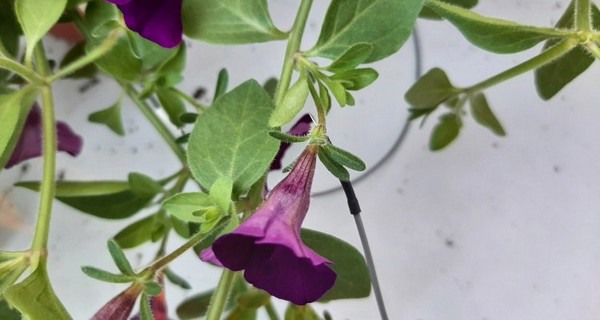Living organisms are constantly sending out electrophysical signals. Plants use these electrical signals to detect stress when attacked by pests and diseases. The Business Unit Greenhouse Horticulture and Flower Bulbs of Wageningen University & Research investigate whether sensors can recognize electrophysical signals.
With this knowledge, diseases and pests can be recognized at an earlier stage, and control measures can therefore be taken more quickly. This is important for propagators: they want to supply clean plants to growers, who in turn want to detect possible contamination as quickly as possible.

Earlier research by WUR showed that it is indeed possible to intercept electrophysical signals. For this study, a strawberry plant was infected with thrips, the contamination of which could be detected after only two days with an electrophysical sensor. This means a significant time saving compared to visual inspection: usually, it is only after about 5-6 days that the leaves take on a silvery glow, which can only be seen by a good inspection of the plants.
The new 2-year study focuses on a vegetable crop (tomato) and an ornamental plant (gerbera, petunia, or Helianthus) and on three threats: mildew, thrips, and a virus. During the first weeks of the research, Vivent's electrophysical sensor measures which signals the crop transmits in a normal state and passes them on to the underlying software. This is followed by targeted infections with the damaged organisms. The idea is that the software learns through artificial intelligence to recognize the specific signals of the crops on the damaged organisms.
 For more information:
For more information:
Wageningen University & Research
www.wur.nl
